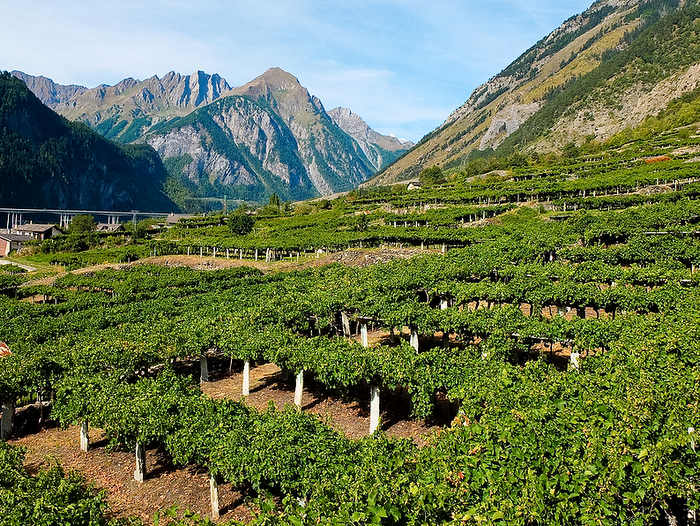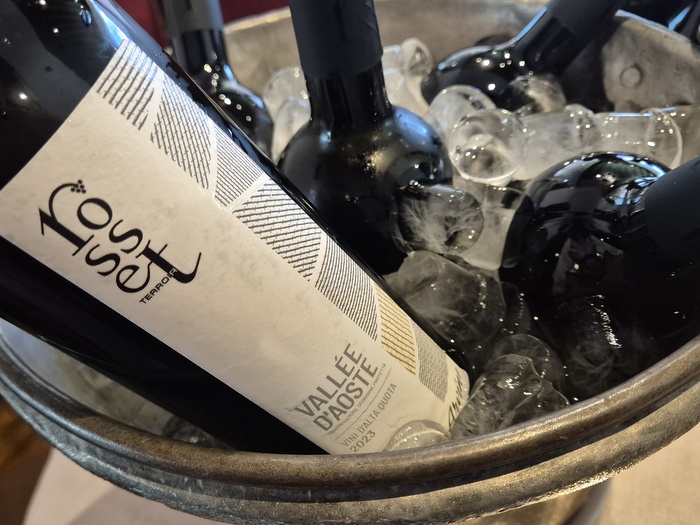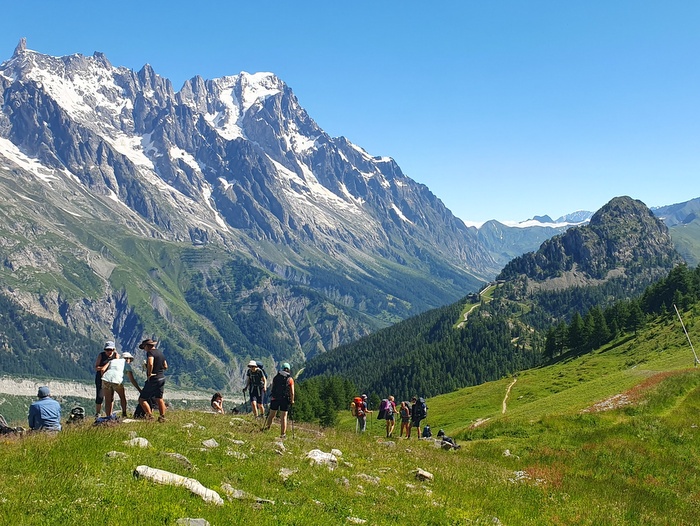The Aosta Valley (Valle d’Aosta), is a mountainous region in the far north west of Italy bordering France and Switzerland. It is home to several native grape varieties, many of which are unique to this area. Due to the high-altitude vineyards and alpine climate, the wines from this region are distinct, made in small quantities and often unavailable outside of the valley. They are characterised by freshness, balance and a mineral quality. The glacial valley is cut through by the Dora Baltea river, and vineyards are planted along its sloping banks. Wine-making here is a heroic activity. Vines are frequently planted using low pergola systems on terraces, and much of the harvesting done by hand. Guests on our Best of the Italian Alps tour have the chance to taste and enjoy the unique wines from this area.

Key White Grapes from the Aosta Valley
Petite Arvine – Also grown in Switzerland but considered native in Aosta. This grape produces complex, mineral-driven wines with good ageing potential.
Prié Blanc – This grape thrives in the highest-altitude vineyards in Europe, some up to 1,200 m above sea level. It makes a crisp, fresh, easy-drinking wine and some producers are experimenting with sparkling wines.
Nus Malvoisie – This is the name given to the Pinot Grigio grape variety when it is cultivated in the Nus wine-growing district, an area due east of the town of Aosta.
International varieties such as Chardonnay and Pinot Bianco are also cultivated.

Key Red Grapes from the Aosta Valley
Petit Rouge – In terms of yield and quality, this is the most widespread and cultivated native red grape variety in the Aosta Valley.
Fumin – A dark-skinned grape producing structured, smoky wines with aging potential. It is often used in blends, but increasingly vinified as a single varietal.
Cornalin – Makes deeply coloured, aromatic reds with wild berry and spice notes.
Mayolet – Rare and delicate variety, usually blended with Petit Rouge. It is a difficult grape to grow and diced with extinction in the last century.
Vien de Nus – Grown around the town of Nus, the grape is typically used in blends to bring finesse and floral aromas.
Other red varieties such as Gamay, Merlot, Nebbiolo and Syrah are also cultivated.

Top Wine Denominations in the Aosta Valley
Valle d’Aosta – This appellation covers most of the wines produced in the Aosta Valley region, including red, white, and rosé wines made from both local and international grape varieties.
Torrette – This appellation is reserved for red wines made from a blend of Petit Rouge, Fumin, and Mayolet grapes. These wines tend to be full-bodied with notes of dark fruit and spice.
Blanc de Morgex et de La Salle – This appellation is reserved for white wines made from the Prié Blanc grape variety. These wines are typically crisp and refreshing with notes of citrus and minerality.
Enfer d’Arvier – This appellation is reserved for red wines made from the Petit Rouge grape variety grown in the commune of Arvier. These wines tend to be lighter-bodied with notes of red fruit and earthy undertones.
Nus Malvoisie – This appellation is reserved for white wines made from the Malvoisie grape variety grown in the commune of Nus. These wines tend to be rich and complex with notes of honey, apricot, and floral aromas.

Wine Tip
If you are in the Aosta region then something to look out for is an Ice Wine by the name of Chaudelune, from the excellent regional co-operative, Cave Mont Blanc. It is made from 100% Prié Blanc in the area around Morgex. The grapes are harvested in late summer, with a small number being left unpicked to dry out on the vine. These are the Chaudelune grapes. In losing water, the concentration of sugars and flavour compounds increases. The final harvest eventually happens at night under a full moon, usually in December. At this altitude, temperatures drop well below zero, and the water in the grapes freezes.
The pickers take the grapes directly to the winery, and begin crushing at first light. Because the water in the grapes stays locked inside as ice, the run-off juice is rich in sugars, acids and flavour compounds. Vinification happens in five very small botti (barrels), each made of a different local wood, and this is the entire production of Chaudelune. The five wines ferment and then mature in their respective barrels for 12 months, each finishing with a distinct character and flavour. The oenologist decides the final blend at bottling time. This sweet wine has a beautiful copper colour and delicate flavours of apricot and bittersweet toffee apple. It pairs excellently with blue cheese.
